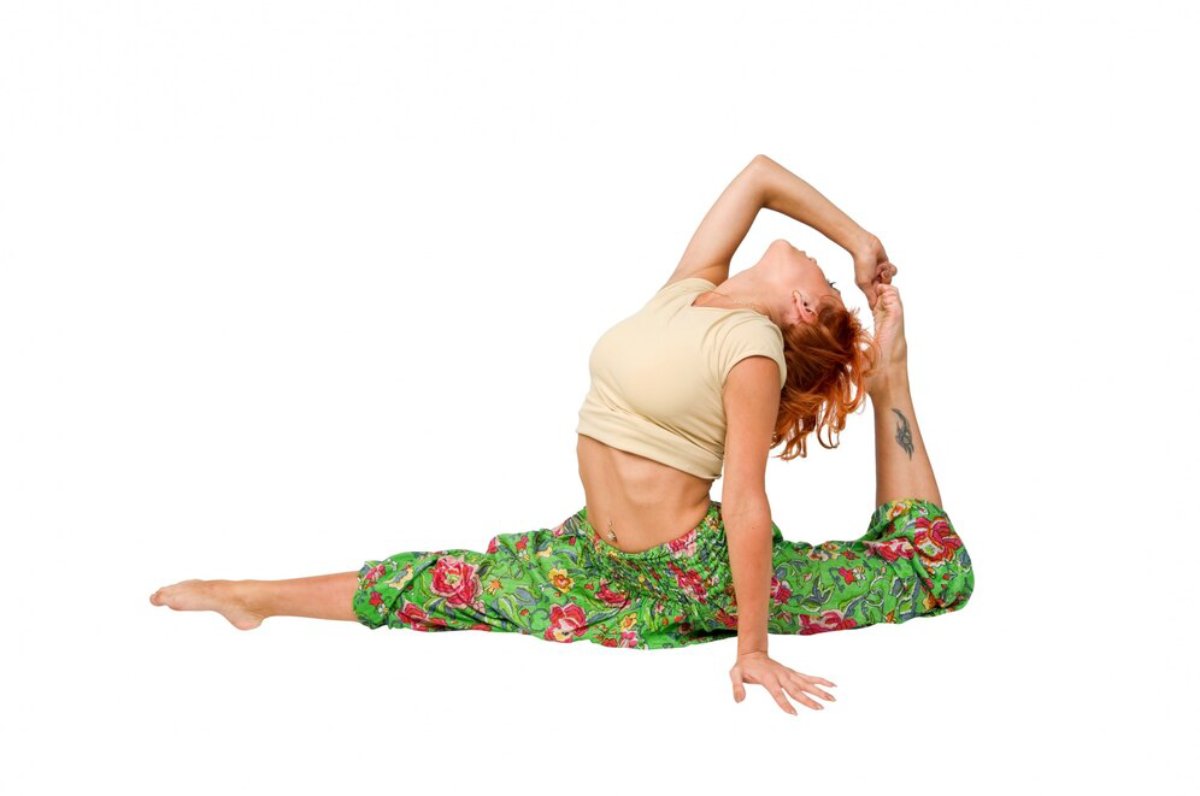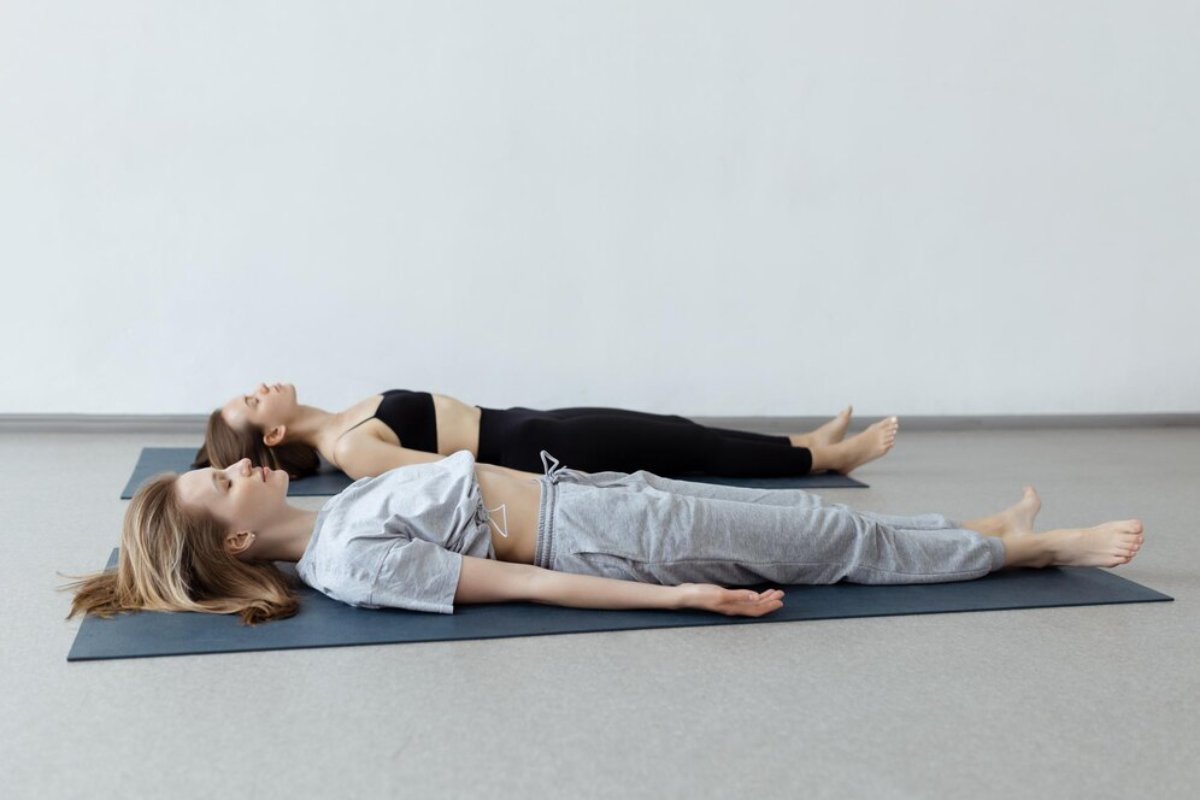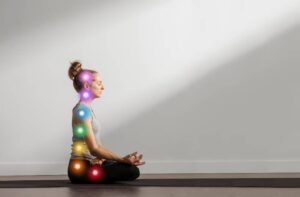The Yoga Blogs

Yoga Techniques to Release Emotional Tension
Have you ever felt a lump in your throat when trying to hold back tears? Or a knot in your stomach during stress? These sensations show your body is storing unprocessed emotions. Emotional tension is real, even if you can’t see it. If ignored, it can cloud your mind and even lead to physical pain.
Picture a gentle way to let go of emotional burdens. Instead of forcing them out, move through them. That’s the magic of yoga for emotional release.
Yoga goes beyond stretching or flexibility. It’s a powerful tool for tension relief and emotional clarity. It helps you reconnect with yourself, process feelings, and build inner resilience. Yoga offers a safe space to explore and release emotions through mindful movement, breath, and self-awareness.
This guide explains how emotional tension forms in the body. We will explore why yoga can help release this tension and share the best yoga techniques for achieving emotional clarity.
Why Do We Store Emotions in the Body?
The Science and Psychology Behind It
Your body remembers everything. Unresolved arguments, unexpressed grief, and stress are stored as tension. Muscles tighten, posture shifts, and breath becomes shallow.
Over time, these tensions affect not just physical health but emotional and cognitive well-being too.
A study in Frontiers in Psychology found that mind-body practices, such as yoga, can help reduce emotional issues. These practices ease symptoms of anxiety and depression. They do this by releasing built-up tension through movement and breath.
How Yoga Supports Emotional Release
Yoga combines:
- Physical movement targets tension in the body.
- Conscious breathwork to calm the nervous system.
- Mindfulness helps build awareness of your inner self.
Together, these elements create space for emotions to surface safely. You might cry in pigeon pose or feel a wave of anger during a twist. That’s normal. It means your body is processing and releasing.
Let’s look at key components of a yoga practice for emotional tension.
Preparing for an Emotionally Supportive Yoga Practice
Before starting, set the right environment and mindset:
- Choose a quiet, private space where you feel safe.
- Bring props: blankets, cushions, blocks — comfort is key.
- Use calming music or silence, depending on what soothes you.
- Set an intention like “I give myself permission to feel” or “I’m open to release.”
Emotional release isn’t always dramatic. It might be subtle — a long exhale, a soft sigh, or a moment of stillness. That’s just as valuable.
Yoga Poses for Emotional Release and Tension Relief
These poses target common areas where emotional tension hides. Practice slowly, breathe deeply, and take your time in each posture.

1. Pigeon Pose (Eka Pada Rajakapotasana)
This deep hip opener unlocks repressed emotions, especially sadness and grief.
How to do it:
- From Downward Dog, bring your right knee forward behind your right wrist.
- Extend your left leg back, keeping hips square.
- Fold forward, resting on your forearms or a cushion.
Why it helps: The hips store stress and trauma. Opening them can release deep emotional blocks.
Tip: Stay for 2–5 minutes on each side. Use a cushion under your hip for support if needed.
2. Seated Forward Bend (Paschimottanasana)
A deeply introspective pose that encourages inward reflection.
How to do it:
- Sit with your legs extended.
- Inhale to lengthen the spine, exhale to fold over your legs.
- Relax your head and drop your shoulders.
Why it helps: This pose invites emotional surrender and gently stretches areas where tension resides. Tip: Slightly bend your knees or use a bolster under your chest for comfort.
3. Supine Twist (Supta Matsyendrasana)
Twists release trapped tension along the spine and digestive system.
How to do it:
- Lie on your back, hugging your knees to your chest.
- Drop your knees to one side, and your arms in a T shape.
- Gaze in the opposite direction and breathe deeply.
Why it helps: This pose massages your internal organs. It releases tension in the spine. It also helps detoxify the body and emotions.
4. Camel Pose (Ustrasana)
A heart-opening posture that stirs vulnerability and emotional release.
How to do it:
- Kneel with knees hip-width apart.
- Place your hands on your lower back or heels.
- Gently arch your back, lifting your chest and looking up or back.
Why it helps: This pose opens the heart and throat. These are energy centres linked to expression and emotional freedom. Note: Come out slowly and rest in Child’s Pose afterwards.
5. Legs-Up-the-Wall (Viparita Karani)
A restorative intervention that encourages emotional recalibration.
How to do it:
- Sit sideways by a wall, swing your legs up as you lie back.
- Rest your arms by your sides, palms up.
- Close your eyes and breathe gently.
Why it helps: This pose calms the nervous system. It soothes anxiety and creates space for reflection. Tip: Stay for 5–10 minutes, using an eye pillow or light blanket for extra comfort.

6. Savasana (Corpse Pose)
The ultimate pose of integration, where everything you stirred is given time to settle.
How to do it:
- Lie flat, legs comfortably apart, arms by your sides.
- Allow your breath to return to normal.
- Release all effort and observe any sensations.
Why it helps: Savasana is where emotional shifts sink in. It’s also a safe place for stillness.
Optional: Use a guided body scan or calming music to enhance relaxation.
Breathwork for Emotional Clarity
Pairing yoga with conscious breathing boosts its emotional benefits. Breath bridges body and mind, and certain techniques unlock deeper calm and clarity.
Three Powerful Pranayama Techniques:
- Box Breathing (Inhale, Hold, Exhale, Hold – all for the same count.)
- Best for: Anxiety, feeling overwhelmed, and emotional overstimulation.
- Bhramari (Humming Bee Breath) How: Inhale deeply, then exhale with a soft hum. Best for: Soothing agitation, calming the mind.
- Alternate Nostril Breathing (Nadi Shodhana) How: Close the right nostril, inhale left. Close left, exhale right. Alternate. Best for: Balancing emotion, improving focus and mental clarity.
A Real-Life Story: Healing Through the Mat
Meet Mia, a client I worked with during a mental wellness retreat. She faced unresolved grief and had tried talk therapy but felt “stuck.”
In one evening yoga session, we focused on hip openers and breath-led movement. During Pigeon Pose, Mia quietly cried. She stayed in that pose for several minutes, allowing her body to feel what her mind had long ignored.
Afterward, she said, “It wasn’t dramatic, but it felt like something inside me finally exhaled.”
That’s the quiet power of yoga — a space where release is allowed, not judged, and where healing happens in its own time.
Beyond the Mat: Integrating Yoga for Long-Term Emotional Health
You don’t need to wait for a crisis to practise yoga for emotional release. In fact, daily movement can help process emotions before they build up.
Try This Weekly Practice Plan:
- Monday: Flow-based sequence with breath awareness
- Wednesday: Deep hip openers + heart-opening poses
- Friday: Restorative yoga and long-held poses
- Daily: 5 minutes of pranayama or gentle stretching before bed
Journaling after your practice can deepen emotional benefits. Write about what you felt in your body, any thoughts that surfaced, or how your energy shifted.
Letting Go, One Breath at a Time
Emotional tension doesn’t need to stay buried. Your body knows how to release it — it just needs permission, presence, and practice. Yoga for emotional release helps you meet yourself with kindness. You learn to breathe through discomfort and feel lighter and freer.
There’s no one “right way” to feel. Sometimes, release looks like tears. Other times, it’s just a deep exhale. But every moment of mindful movement brings you closer to emotional clarity.
Now it’s your turn. Roll out your mat. Pick a pose. Start small. Notice how your body responds — and trust that your healing will follow. Have you experienced emotional release through yoga? Share your story in the comments. Pass this to someone who needs it. Also, subscribe for more wellness tips based on compassion.
Because sometimes the most powerful thing you can do… is simply to feel.









